Forces are applied on a wheel of radius 20 cm as shown in the figure. The torque produced by the forces 4 N at A, 8N at B, 6 N at C and 9N at D at angles indicated is
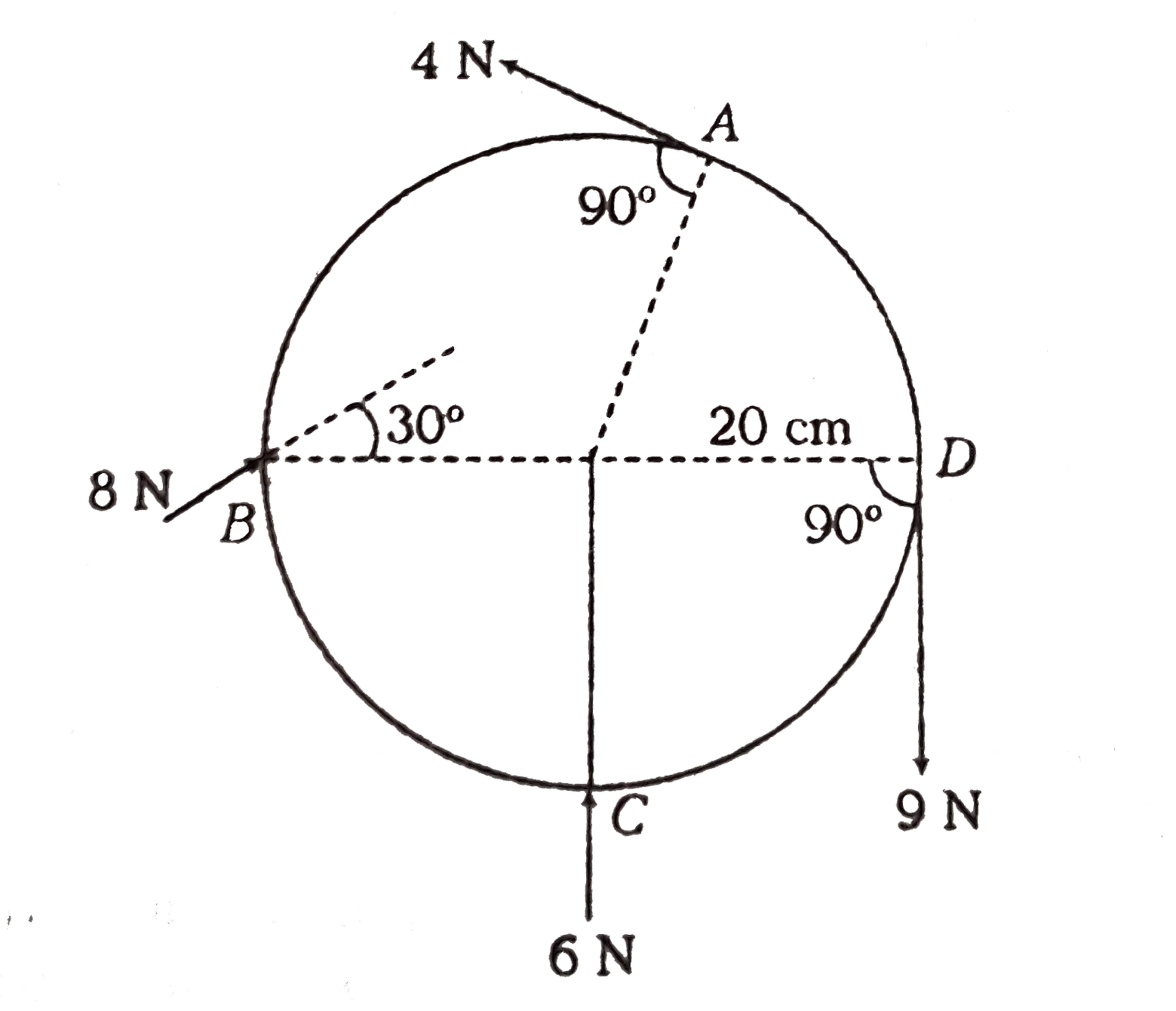
5.4 N-m anti-clockwise
1.80 N-m clockwise
2.0 N-m clockwise
3.6 N-m clockwise
The correct Answer is:B
Force 8 N can also be resolved in tangential and radial directions
τnet=(9+8sin30∘−4)(0.2)N-m clockwise
=1.8N-m clockwise.
Topper's Solved these Questions
- BOOK - DC PANDEYCHAPTER - ROTATIONEXERCISE - (B) Chapter Exercises25videos
ROTATION
- BOOK - DC PANDEYCHAPTER - ROTATIONEXERCISE - (C) Chapter Exercises39videos
ROTATION
- BOOK - DC PANDEYCHAPTER - ROTATIONEXERCISE - Check point 9.315videos
ROTATION
- BOOK - DC PANDEYCHAPTER - RAY OPTICSEXERCISE - Integer type q.15videos
RAY OPTICS
- BOOK - DC PANDEYCHAPTER - ROTATIONAL MECHANICSEXERCISE - Subjective Questions2videos
ROTATIONAL MECHANICS
Similar Questions
Knowledge Check
- Question 1 - Select One
A wheel of radius 20 cm has forces applied to it as shown in the figure. The torque produced by the forces 4N at A, 8N at B, 6N at C, and 9N at D at angles indicated is :
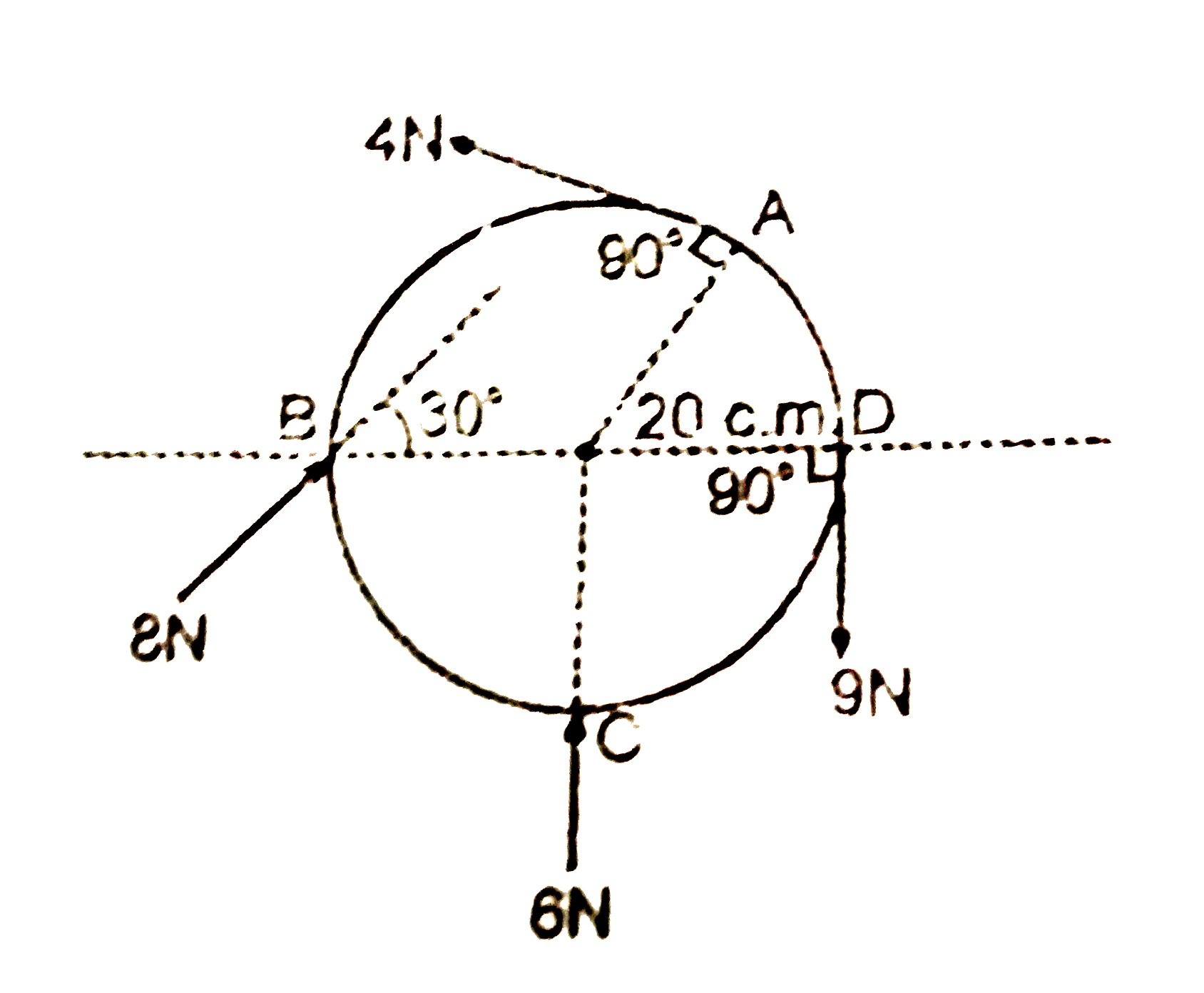 A5.4 N-m AnticlockwiseB1.8 N-m ClockwiseC2.0 N-m ClockwiseD5.4 N-m Clockwise
A5.4 N-m AnticlockwiseB1.8 N-m ClockwiseC2.0 N-m ClockwiseD5.4 N-m Clockwise - Question 2 - Select One
A wheel of radius 20cm has four forces applied to it as shown in fig. Then, the torque produced by these forces about O is.
 .A5.4Nm anticlockwiseB1.8Nm clockwiseC1.8Nm anticlockwiseD5.4Nm clockwise
.A5.4Nm anticlockwiseB1.8Nm clockwiseC1.8Nm anticlockwiseD5.4Nm clockwise - Question 3 - Select One
If 100N force is applied to 10kg. block as shown in diagram then acceleration produced for slab-
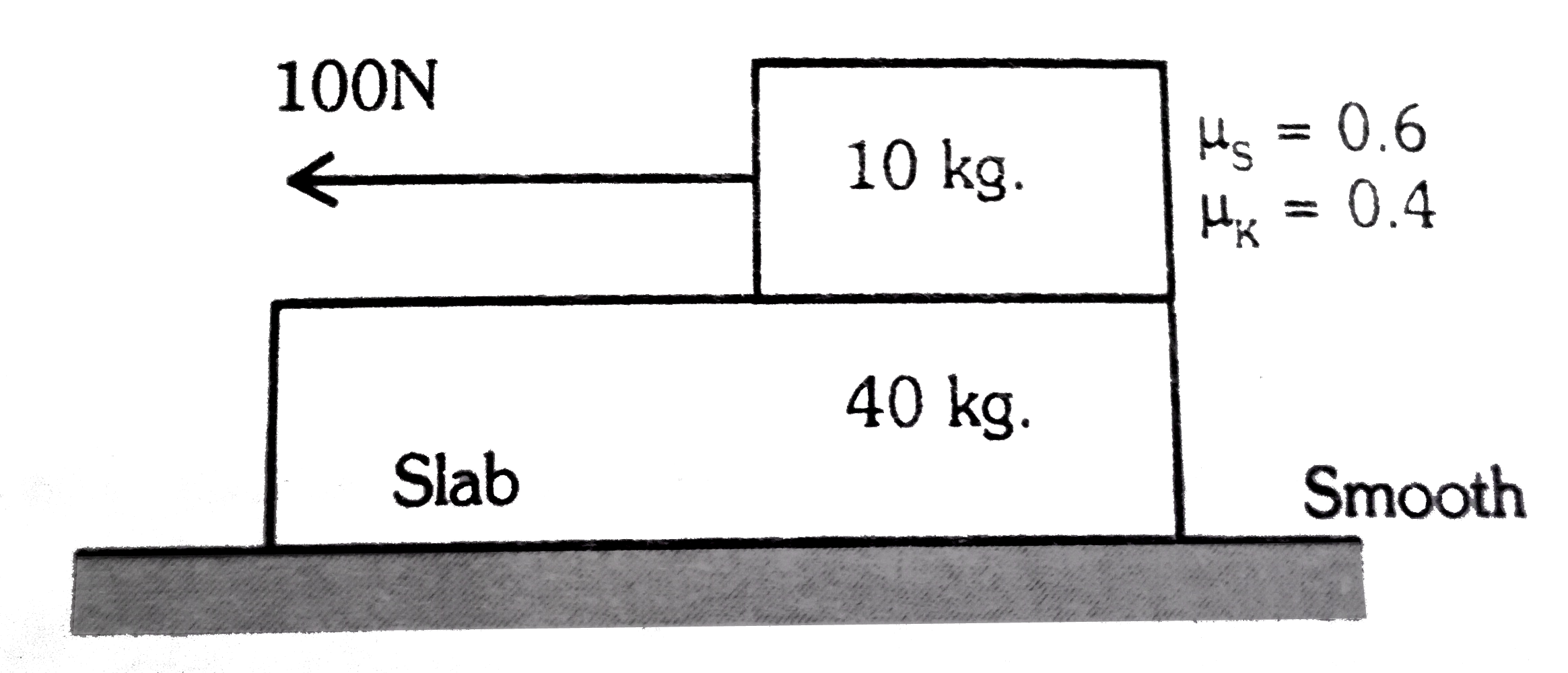 A1.65m/s2B0.98m/s2C1.2m/s2D0.25m/s2
A1.65m/s2B0.98m/s2C1.2m/s2D0.25m/s2
fig shows a uniform rod of length of 3.0 kg The string shown in the figure are pulled by constant forces of 20 N and 32 N. The force exerted by the 20 cm part of the rod on the 10 cm part is found to be 8T. Find out value of T (all the surfaces are smooth and the strings and the pulleys are light).
 View Solution
View SolutionA horizontal force F is applied such that the block remains stationary because N will produce torque.
The torque produced by friction force is equal and opposite the torque produce due to normal reaction (N).
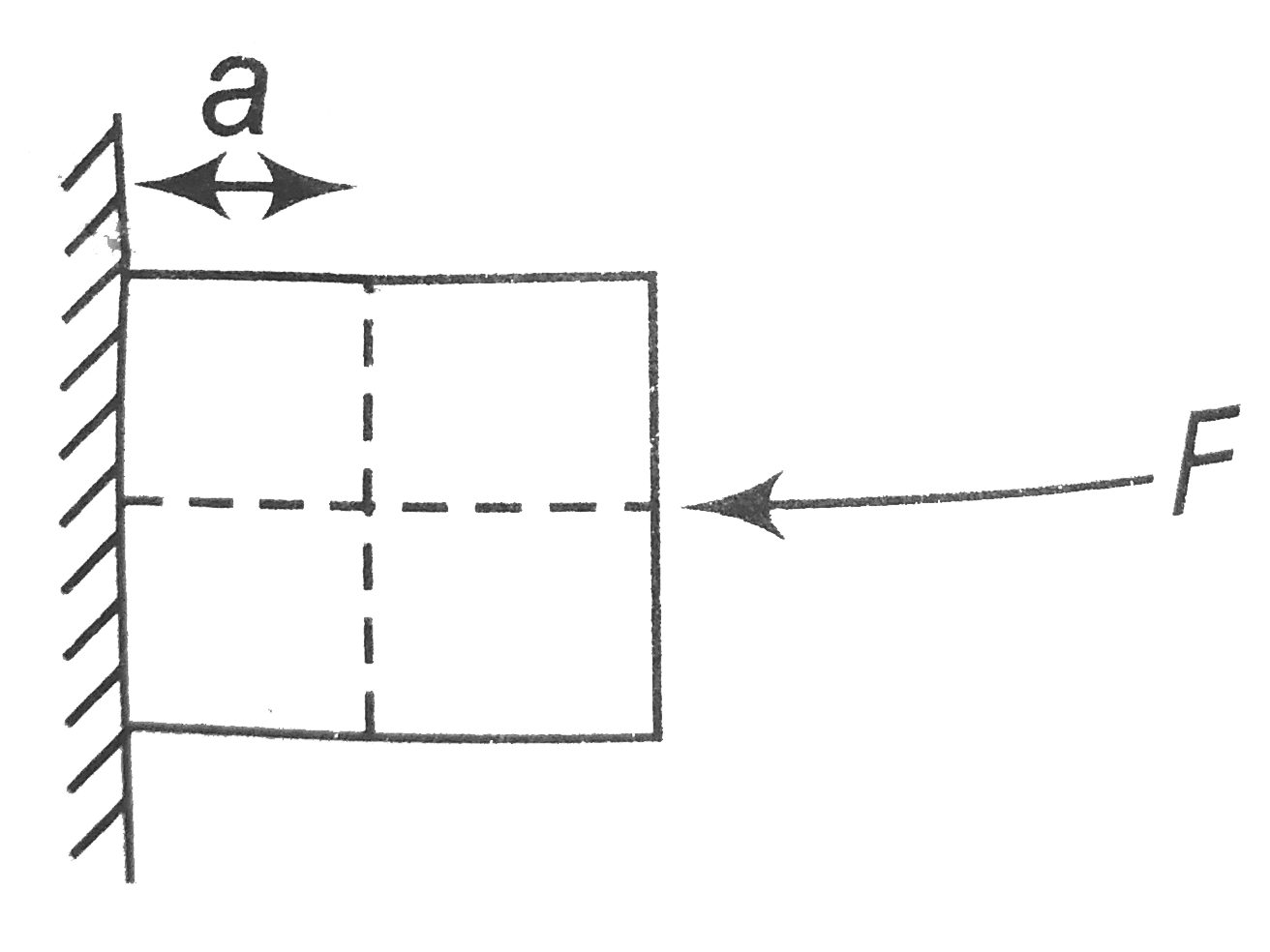 .View Solution
.View SolutionIf 100 N force is applied to 10 kg block as shown is diagram, then the acceleration produced in lower block is
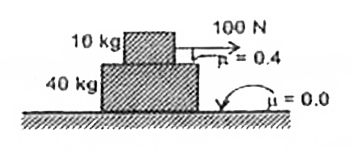 View Solution
View SolutionForces of 4 N and 5 N are applied at origin along X-axis and Y-axis respectively. The resultant force will be
View SolutionA clockwise torque of 6N−m is applied to the circular cylinder as shown in the figure. There is no friction between the cylinder and the block.
 View Solution
View Solution


